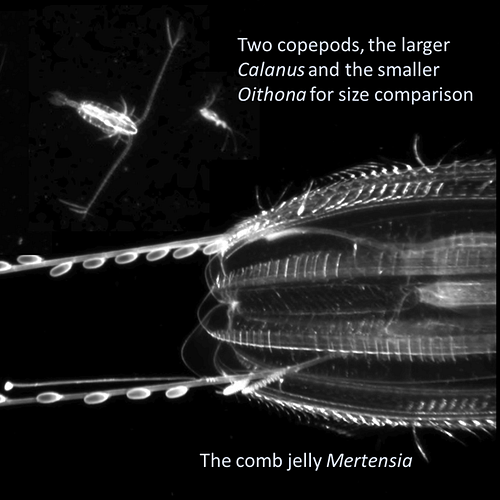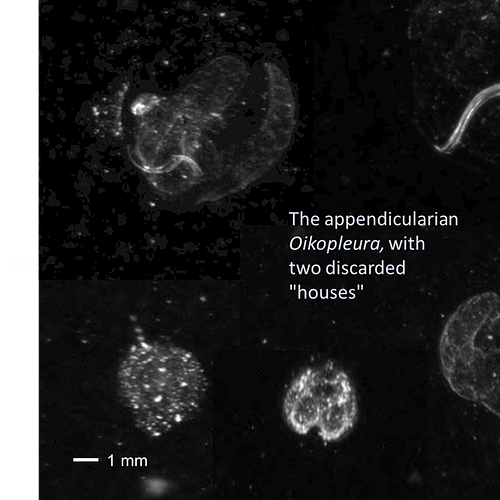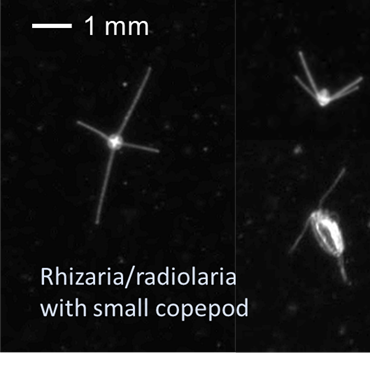15 January 2024 blog
By Fredrika Norrbin, UiT The Arctic University of Norway
Did you know that tiny radiolarians, appendicularians living in temporary housing, and predatory arrow worms and jellyfish thrive in Arctic Seas in the Polar Night?
Copepod populations decline during winter, because the primary (plant) production is on hold, and predators are active. We may think of fish as the main enemies of zooplankton, but many invertebrates feed on them also. Examples of this are comb jellies, hydromedusae, siphonophores and arrow worms. Meanwhile, other plankton groups expertly sweep the waters for tiny particles like bacteria, algal cells and fragments of organisms (See heading photo).
Appendicularia – also called larvaceans or pelagic tunicates – build elaborate mucus nets around their body to catch particles. These are often called houses, because the animal sits inside and whips up a current through the nets. When the net is clogged up and becomes inefficient, it is cast away, and the animal builds a new one−even in winter in the Arctic! The old house then becomes colonized by bacteria, other microorganisms and small invertebrates while sinking to the bottom. This is one of the ways that carbon is transported to the deep ocean.
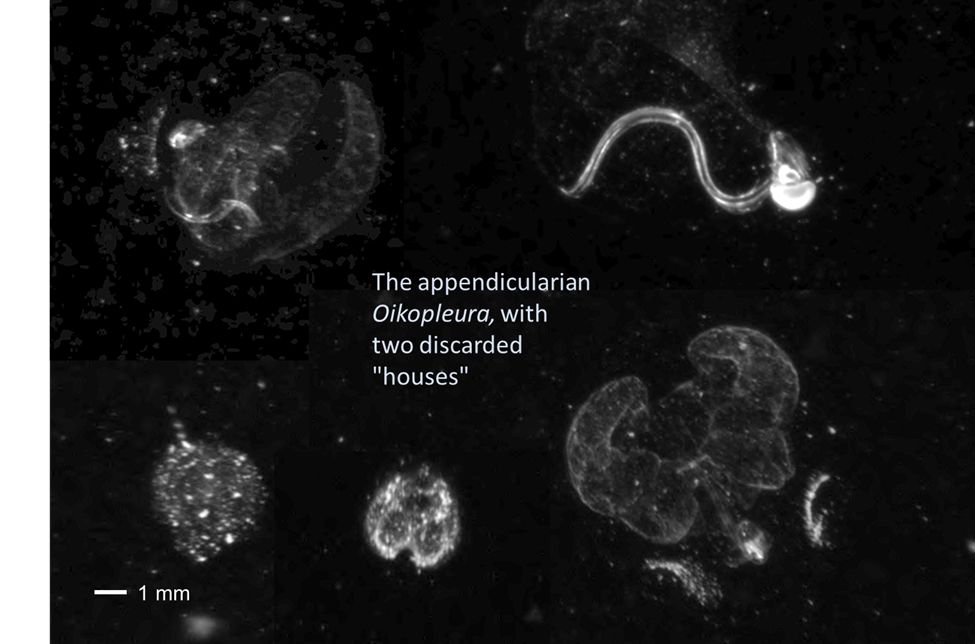
Appendicularians in their house structures, and two examples of discarded houses, which at first retain a “butterfly” shape, but eventually collapse and become new homes for many microorganisms while sinking into the depths of the ocean. (Photo: Fredrika Norrbin).
Radiolarians and other protists also seem to feed during winter, although we see more of them in summer and early fall. These can be as big as copepods (a few mm in diameter) but are much more difficult to study. Analyses have shown that they eat phytoplankton, other small organisms and debris. These organisms may be as important as the more well-studied plankton in the marine ecosystems.
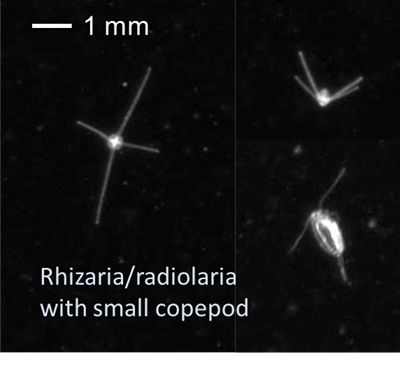
Members of the varied group Rhizaria can be the same size or larger than copepods and eat similar food. These Arctic specimens, may be members of the Medusettidae (looking a bit like hydromedusae), with the small copepod Pseudocalanus for size comparison. (Photo: Fredrika Norrbin)
All photos are taken by Fredrika Norrbin using a Video Plankton Recorder (VPR) during the Polar Front cruise to the Barents Sea in January 2024. The instrument captures images of plankton, while easuring depth, salinity, temperature and chlorophyll fluorescence at the same time. In addition to enabling us to study the distribution of plankton, and calculate their abundance and environmental preferences, the images give us a peek into the everyday lives of plankton.
**
The cruise is part of the Research Council of Norway funded project “Polar Front ecosystem studies using novel autonomous technologies: Knowledge for environmental management and assessing ecological risk” (PolarFront) with additional financial support from ConocoPhillips and Equinor. The project, which is led by Paul Renaud, Akvaplan-niva, focus is on the hydrographical, chemical and biological processes in the Barents Sea Polar Front region.
More about the Polar Front project here: https://www.akvaplan.niva.no/en/projects-networks/polar-front-ecology/


